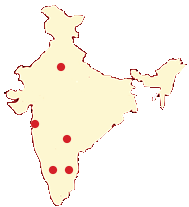Overview

What Is A Carotid Endarterectomy ?
A carotid endarterectomy is a surgical procedure in which a doctor removes fatty deposits blocking one of the two carotid arteries, the main supply of blood for the brain. Carotid artery problems become more common as people age. The disease process that causes the buildup of fat and other material inside the artery walls is called atherosclerosis, popularly known as "hardening of the arteries." The fatty deposit is called plaque; the narrowing of the artery is called stenosis. The degree of stenosis is usually expressed as a percentage of the normal diameter of the opening.
What Is A Stroke ?
A stroke occurs when blood flow is cut off from part of the brain. In the same way that a person suffering a loss of blood to the heart can be said to be having a "heart attack," a person with a loss of blood to the brain can be said to be having a "brain attack." There are two kinds of stroke, hemorrhagic and ischemic. Hemorrhagic strokes are caused by bleeding within the brain. Ischemic strokes, which are far more common, are caused by a blockage of blood flow in an artery in the head or neck leading to the brain. Some ischemic strokes are due to stenosis, or narrowing of arteries due to the build up of plaque, fatty deposits and blood clots along the artery wall. A vascular disease that can cause stenosis is atherosclerosis, in which deposits of plaque build-up along the inner wall of large and medium-sized arteries, decreasing blood flow. Atherosclerosis in the carotid arteries, two large arteries in the neck that carry blood to the brain, is a major risk factor for ischemic stroke.
What Are The Symptoms Of A Stroke ?
Symptoms of stroke include:
- Sudden numbness, weakness, or paralysis of face, arm or leg, especially on one side of the body.
- Sudden confusion, trouble talking or understanding speech.
- Sudden trouble seeing in one or both eyes.
- Sudden trouble walking, loss of balance, or coordination.
- Sudden severe headache with no known cause (often described as the worst headache in a person's life).
Symptoms may last a few moments and then disappear. When they disappear within 24 hours or less, they are called a transient ischemic attacks (TIA).
Procedure
 The internal, common and external carotid arteries are clamped, the lumen of the internal carotid artery is opened, and the atheromatous plaque substance removed. The artery is closed, hemostasis achieved, and the overlying layers closed. Many surgeons lay a temporary shunt to ensure blood supply to the brain during the procedure. The procedure may be performed under general or local anaesthesia. The latter allows for direct monitoring of neurological status by intra-operative verbal contact and testing of grip strength. With general anaesthesia indirect methods of assessing cerebral perfusion must be used, such as electroencephalography (EEG), transcranial doppler analysis and carotid artery stump pressure monitoring. At present there is no good evidence to show any major difference in outcome between local and general anaesthesia.
The internal, common and external carotid arteries are clamped, the lumen of the internal carotid artery is opened, and the atheromatous plaque substance removed. The artery is closed, hemostasis achieved, and the overlying layers closed. Many surgeons lay a temporary shunt to ensure blood supply to the brain during the procedure. The procedure may be performed under general or local anaesthesia. The latter allows for direct monitoring of neurological status by intra-operative verbal contact and testing of grip strength. With general anaesthesia indirect methods of assessing cerebral perfusion must be used, such as electroencephalography (EEG), transcranial doppler analysis and carotid artery stump pressure monitoring. At present there is no good evidence to show any major difference in outcome between local and general anaesthesia.Non-invasive procedures have been developed, by threading catheters through the femoral artery and up through the aorta, and then inflating a balloon to to dilate the carotid artery, with or without a wire-mesh shunt. However, this endovascular procedure is controversial; many investigators report an increased incidence of stroke and recommend against it.
For more information, medical assessment and medical quote
as email attachment to
Email : - info@wecareindia.com
Contact Center Tel. (+91) 9029304141 (10 am. To 8 pm. IST)
(Only for international patients seeking treatment in India)










